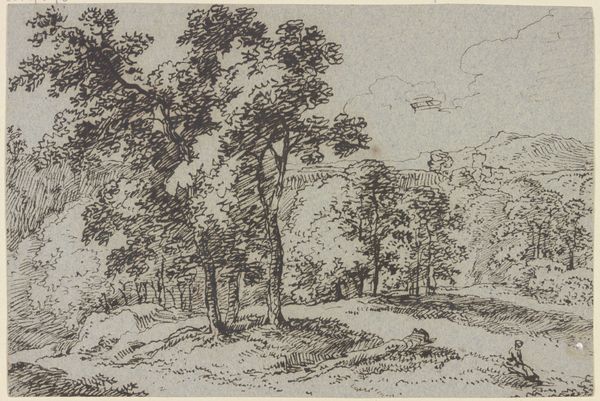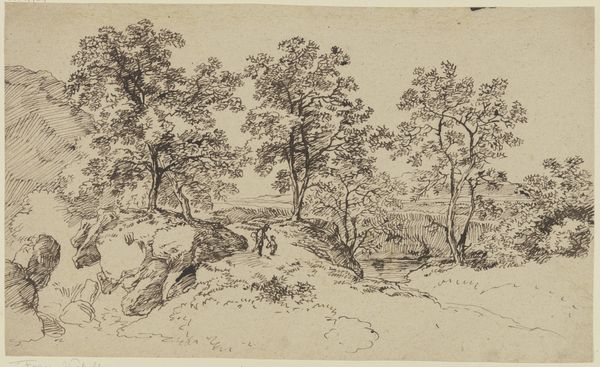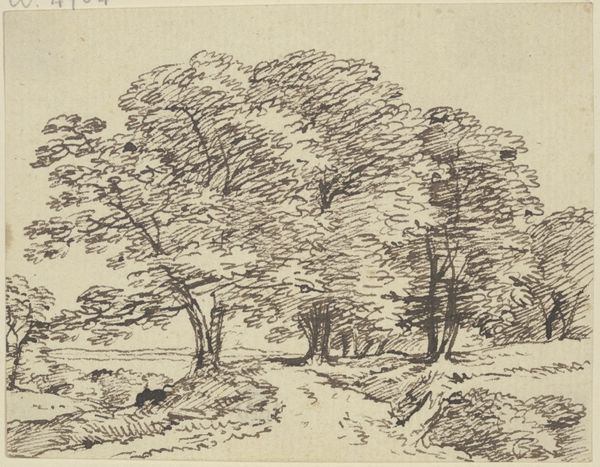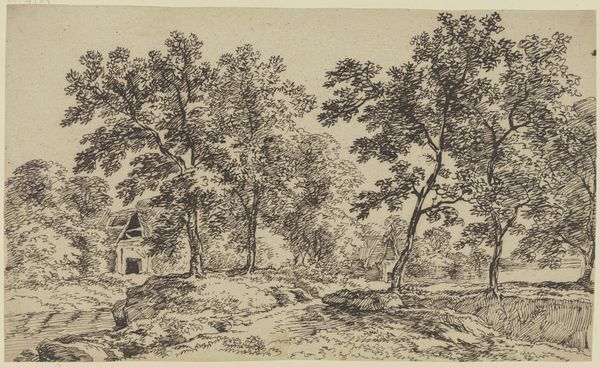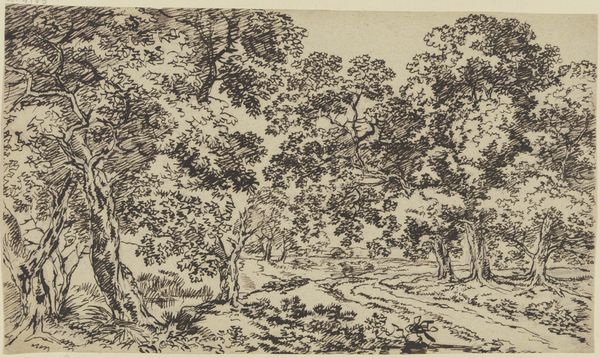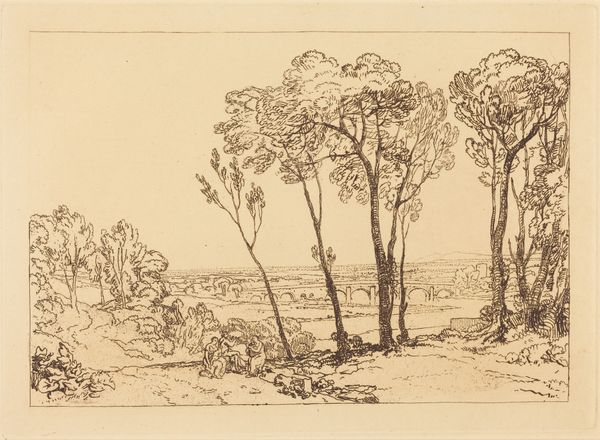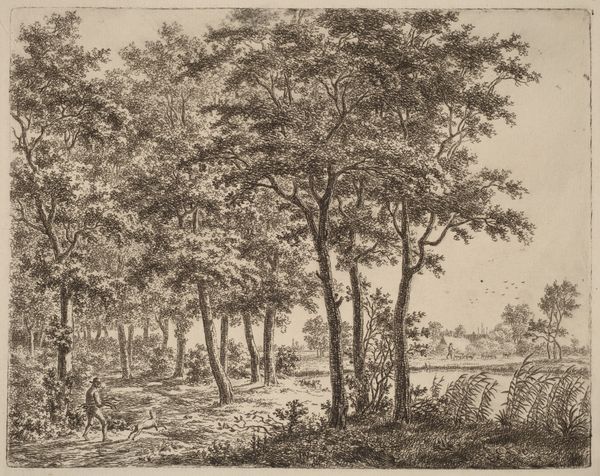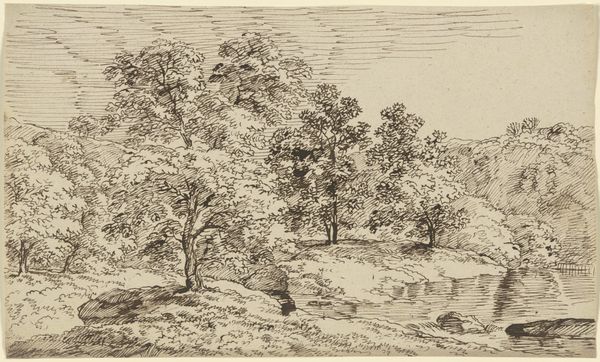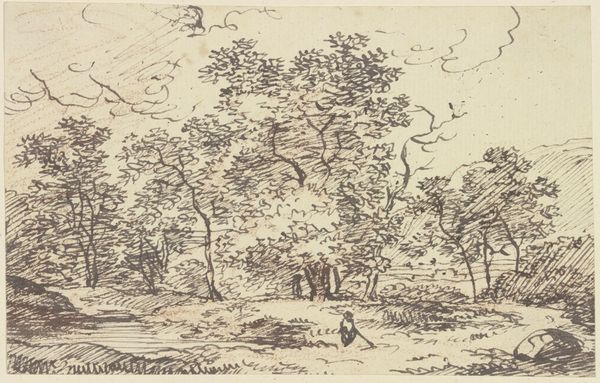
drawing, etching, ink
#
drawing
#
etching
#
landscape
#
etching
#
ink
#
classicism
#
history-painting
Copyright: Public Domain
Curator: Looking at Franz Kobell's "Landschaft mit Hirte und zwei Rindern," or "Landscape with Shepherd and Two Cattle," I'm struck by the scene’s serenity. The artwork, a pen and ink drawing using etching, possesses a tranquil atmosphere. Editor: I immediately key into the quiet power dynamic that Kobell presents in the figure of the shepherd, so diminutive in relation to the animals he supposedly tends. The piece evokes the vulnerabilities present within pastoral fantasy. Curator: Indeed. Consider how these idealized landscapes often mask the realities of agrarian life, the hard labor, and the social hierarchies that governed it. Kobell's landscapes emerged during a period where artistic expression became increasingly tied to notions of national identity and Romanticism. This imagery promotes a very specific version of the fatherland. Editor: And this ideal is certainly exclusionary. Who is missing from this idyll? Whose labor is rendered invisible? The lone shepherd might be an aesthetic trope, but it’s critical to unpack how that image functions ideologically. We see the glorification of an imagined past but must be critical of what and who gets erased within the frame. Curator: It’s fascinating how Kobell utilizes classical landscape conventions—the careful arrangement of trees to frame the scene, the delicate linework that suggests depth—while potentially embedding this silent commentary. The subtle details, like the fallen log or the almost casual way the cattle are placed, suggest a deeper narrative. Editor: I am also struck by how easily this picturesque setting could transition into a romanticized war scene in the style of his contemporaries. In what ways is this presented as untouched versus tamed land? How are we meant to imagine the relation of people to land in this construction of German identity? Curator: Ultimately, Kobell's work serves as a window into the evolving artistic and social landscape of his time. He invites us to consider the interplay between idealized visions and the complex realities they often obscure. Editor: A vital reminder that art never exists in a vacuum.
Comments
No comments
Be the first to comment and join the conversation on the ultimate creative platform.
